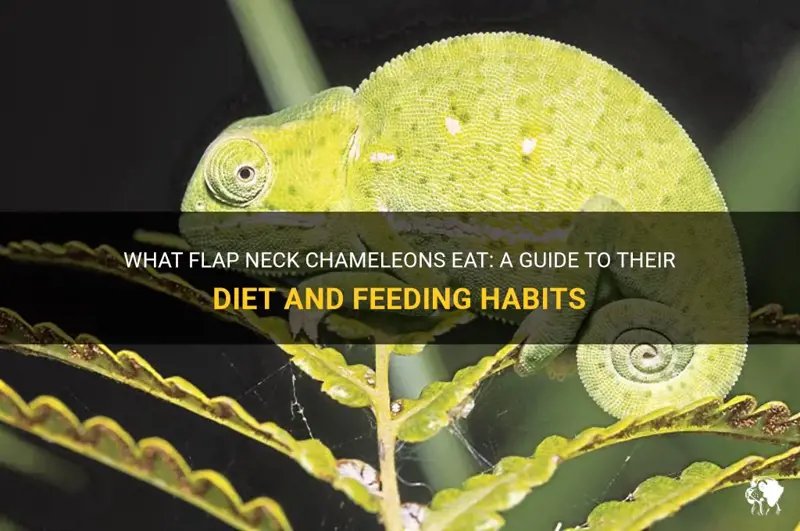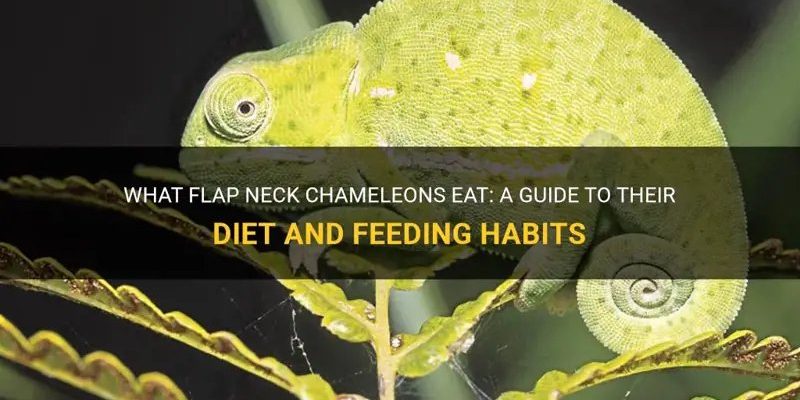
Imagine trying to figure out what to feed your friend who’s extremely picky. You’d have to consider their likes, dislikes, and nutritional needs. That’s a bit like what you’ll have to do for your flap-necked chameleon. These fascinating creatures feast primarily on insects, but it’s essential to know exactly what they enjoy and how to keep their diet well-balanced. Let’s dive into their feeding habits and nutritional needs, so you can ensure your pet is happy and healthy!
The Diet of a Flap-Necked Chameleon
Flap-necked chameleons are insectivores, which means they mainly eat insects. This is similar to how we might prefer a burger or a salad; they have their favorites, too! Common insects in their diet include:
- Crickets
- Mealworms
- Waxworms
- Roaches
- Butterflies and moths
- Fruit flies (for the little ones)
These chameleons are known for their patience and skill in hunting. They’ll often sit still, waiting for their next moving snack. Think of it like a waiter taking your order—just with a much longer wait time and a little more tongue action! When you’re feeding them, it’s important to offer a variety of these insects to ensure they get a mix of nutrients.
You might be wondering, “How often should I feed my flap-necked chameleon?” Well, the feeding schedule can depend on their age. Hatchlings and juveniles tend to munch more often compared to adults. Here’s a basic breakdown:
- Hatchlings (up to 3 months): Feed them daily, about 5-10 small insects.
- Juveniles (3-6 months): Every other day is fine, with 10-12 insects.
- Adults (6 months and older): Every other day or 2-3 times a week, with 8-10 insects each feeding.
You can think of this feeding pattern as similar to a toddler who eats a lot and then slows down as they grow. The key is to monitor their weight and adjust as needed. If they’re on the skinny side, they might need a bit more grub!
Nutritional Supplements
Just throwing bugs at your chameleon isn’t enough; they need a well-rounded diet! Their nutrition is enhanced through supplements, which is like adding seasoning to your cooking. Here’s what you’ll want to include:
- Calcium powder: Essential for bone health. Dust their insects with it a few times a week.
- Vitamin D3: Helps them absorb calcium well. Use it about once a week.
- Multivitamin supplements: A good all-in-one once every couple of weeks can help keep everything in balance.
These supplements ensure that your flap-necked chameleon gets all they need to thrive, especially since most captive insects may lack some nutrients. Think of it as making sure your meal has vitamins and minerals—way healthier than just eating plain pasta!
Hydration Needs
You can’t talk about a chameleon’s diet without mentioning water. Hydration is crucial! Flap-necked chameleons often prefer drinking water droplets rather than standing water. Misting their enclosure regularly will not only provide drinking water but also help maintain humidity levels.
You might feel like a barista when you mist their habitat, making it just right. Aim to mist at least once a day. If you’re wondering if they need a water dish, it’s not a must, but you can add one if you prefer. Just keep an eye on it to avoid it becoming a breeding ground for unwanted critters.
Common Feeding Problems
Feeding flap-necked chameleons can come with its set of challenges. Here are a few common issues and how to tackle them:
- Refusal to eat: This could be due to stress, improper temperatures, or even illness. Make sure their habitat is cozy and inviting.
- Overfeeding: It’s easy to overdo it, especially when they give you those big, sad eyes. Keep to the recommended quantities.
- Insect size: Ensure the insects aren’t too big! A good rule is that they should be smaller than the distance between the chameleon’s eyes.
If you notice persistent issues, a vet’s advice could be beneficial. It’s always better to be safe and get a professional opinion.
Feeding a flap-necked chameleon involves more than just offering up some crickets. From understanding their dietary preferences to ensuring they get the right nutrients and hydration, there’s a lot to consider. Observing their eating habits and adjusting as needed is key to keeping them healthy and vibrant.
So, next time you watch your chameleon flick its tongue and catch a snack, you’ll know just how much thought and care goes into their meals. A happy chameleon is a well-fed chameleon, and with a little attention, you can ensure they thrive in your care. Happy feeding!

